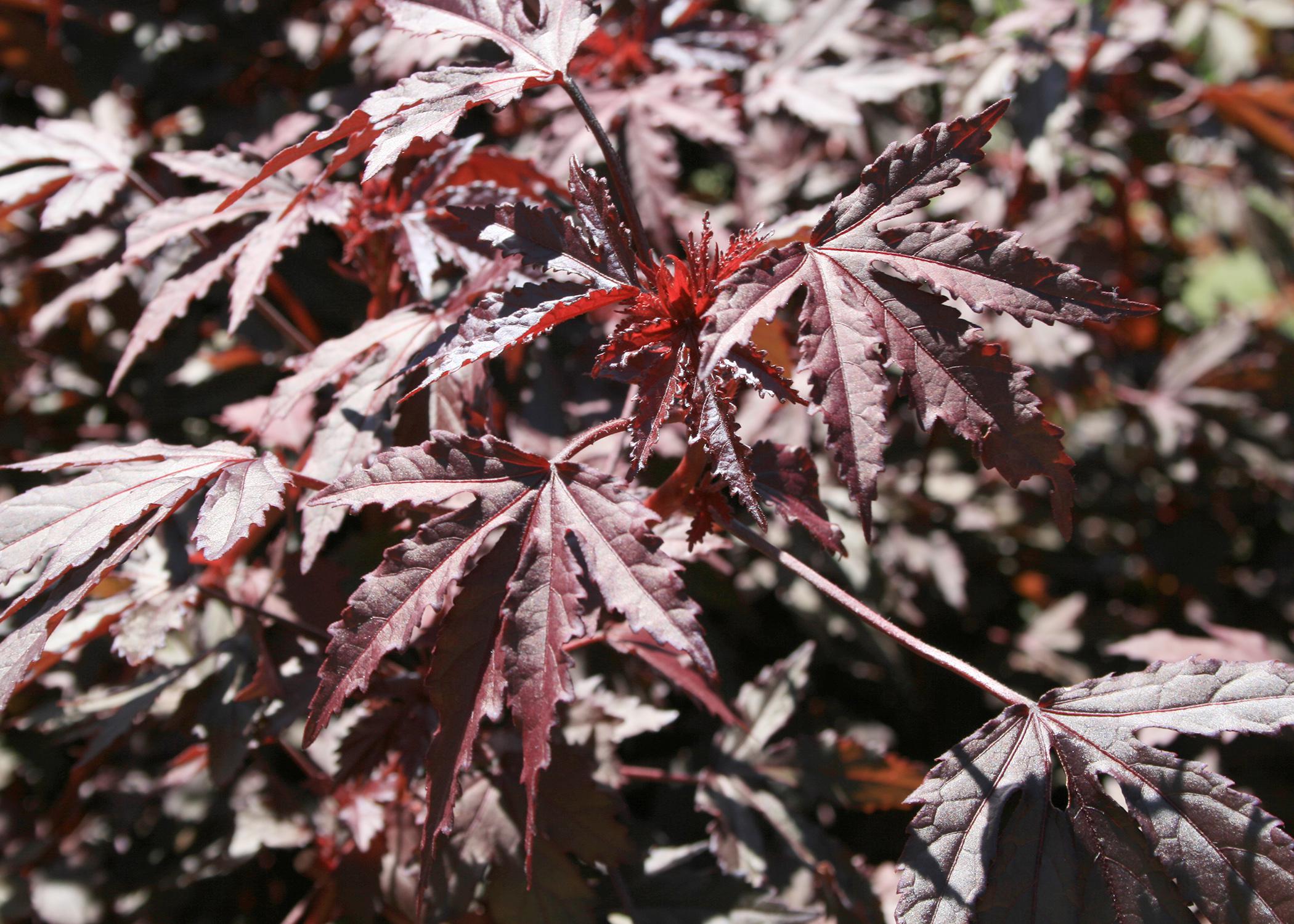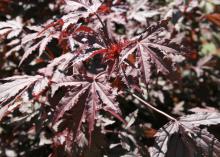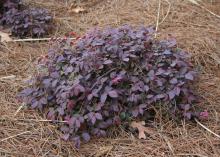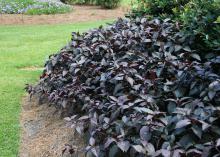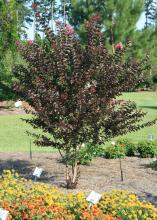Information Possibly Outdated
The information presented on this page was originally released on October 4, 2021. It may not be outdated, but please search our site for more current information. If you plan to quote or reference this information in a publication, please check with the Extension specialist or author before proceeding.
Choose dark foliage for landscape shine
I can’t deny that I love really, really dark landscape plant foliage. Any plant sporting burgundy- or maroon-colored leaves gets my attention.
If you feel the same way, consider some of these plants to add to your home landscape.
Purple Knight Alternanthera was named a Mississippi medallion winner in 2005.
I consider this a landscape unicorn that handles just about anything our Mississippi summer season can throw at it. There aren’t any pest problems for Purple Knight Alternanthera. Bring on the drenching rains and hot periods of drought.
Purple Knight has dark-purple foliage and will easily grow up to 36 inches tall. This just might be the almost perfect garden plant to grow.
If Purple Knight is a little too big for your taste, put those pruners away. Another great choice is the compact-growing Purple Prince, which gets only about 12 inches tall. The foliage is that dark burgundy that I love; plus, the undersides of the leaves have a reddish, ruby-rose color.
I am a hibiscus nut, and I love the hardy varieties that have dark foliage and huge flowers. But there is a great selection that has a much different look. In fact, it looks like a Japanese maple.
Mahogany Splendor will grow to about 5 of 6 feet tall, and it has dramatic, purple-burgundy leaves that get darker with more exposure to full sun. The sharply lobed leaves have coarse, deeply serrated edges. If you plant one of these, you will wish you had room in your landscape for more.
A reliable landscape performer is loropetalum, and a few of these selections have really nice, dark leaves.
The selection Burgundy was named a Mississippi Medallion winner in 2001. Its foliage is reddish purple and with cool weather in the fall, the leaves can turn bright orange. It has the potential to be a big plant, reaching up to 10 feet tall, but all loropetalums are very tolerant of pruning to keep them tidy.
If you don’t want to have to prune plants, there are great loropetalum selections that have been bred to have smaller growth habits.
One I really like is called Purple Pixie, which has a weeping growth habit. Its foliage is a deep purple-burgundy and is evergreen. Purple Pixie will spread up to 4 feet wide and get only about 1 foot tall. The burgundy-leaved loropetalum varieties have pink to red flowers with strap-like petals.
One dark foliage tree I’m excited about was developed at the Mississippi State University South Mississippi Branch Experiment Station in Poplarville.
Delta Jazz was the first crape myrtle with unusual, dark foliage that emerges a rich raspberry-maroon and then matures to dark mahogany brown. This foliage color accents the clusters of medium-pink flowers in the late summer.
Delta Jazz makes a fantastic landscape feature plant either pruned to tree form or allowed to grow as a large landscape shrub.
October is a great time to add shrubs and trees to your landscape. To add a new element of interest to your landscape, be on the lookout for these and other shrubs and trees with dark foliage as you’re planning and planting this fall.

